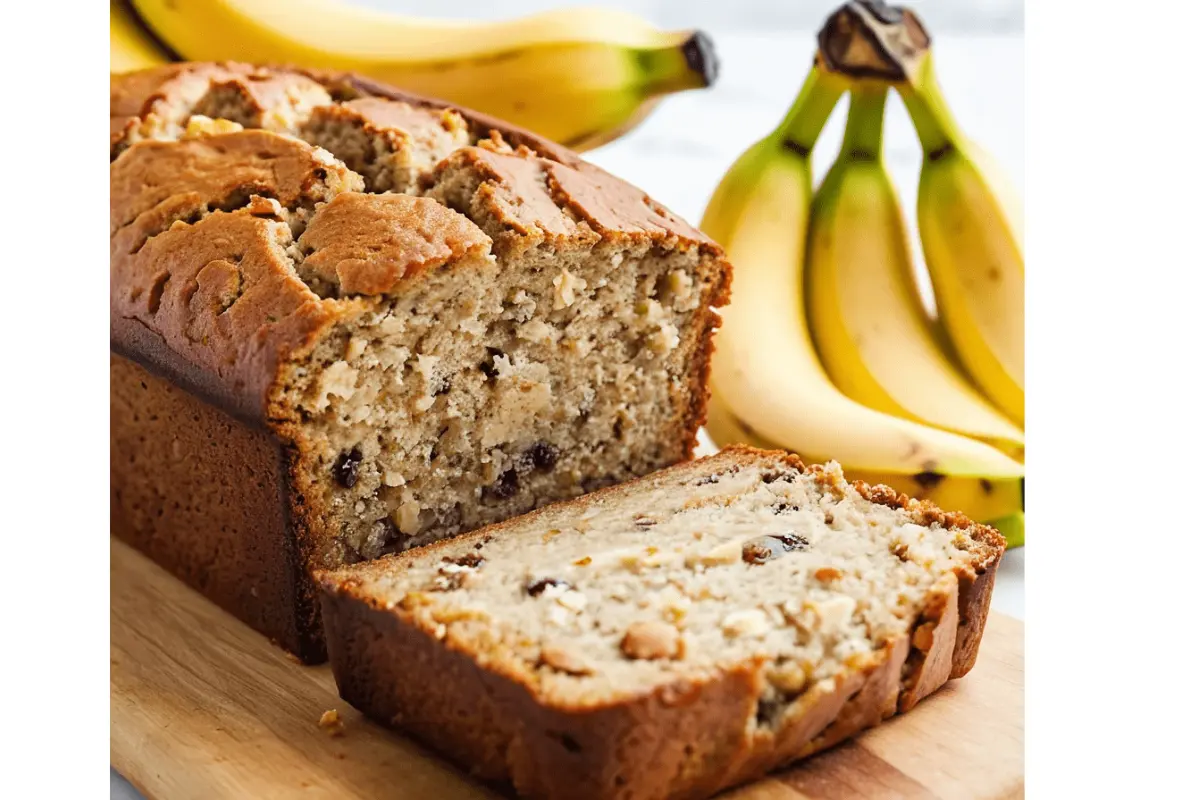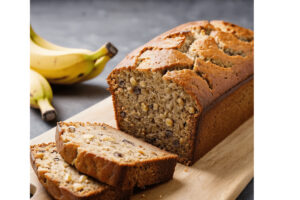How to Keep Your Banana Loaf Moist
Introduction
Baking the perfect banana loaf can be a rewarding experience, but it can also be challenging, especially when it comes to keeping the loaf moist. A dry banana loaf can be a disappointment, lacking the rich flavor and tender crumb that makes this treat so beloved. In this comprehensive guide, we’ll explore everything you need to know to ensure your banana loaf remains moist and delicious, from selecting the right ingredients to mastering the baking process, and even how to store it properly to maintain that moisture over time.
Keeping a banana loaf moist involves attention to detail at every stage of the baking process, and understanding the science behind it can make all the difference. We’ll dive into the most common reasons why banana bread turns out dry and how to avoid those pitfalls. Plus, we’ll share some handy tips for reviving a dry loaf if things don’t go as planned.
Factors That Contribute to a Moist Banana Loaf
The key to a moist banana loaf lies in understanding the factors that contribute to its texture. Several elements can influence whether your loaf turns out perfectly moist or disappointingly dry. Let’s take a closer look:
- Quality of Ingredients: Always use fresh, high-quality ingredients, especially the bananas. Overripe bananas, which are soft and sweet, add extra moisture to your loaf. The natural sugars in overripe bananas not only enhance the flavor but also contribute to the moistness of the bread. Bananas with brown spots are ideal as they are the ripest and provide the most moisture.
- Proper Mixing Techniques: One of the most common mistakes in baking banana bread is overmixing the batter. When the batter is overmixed, the gluten in the flour develops more than it should, leading to a dense, dry loaf. To avoid this, mix the wet and dry ingredients just until they are incorporated. Overmixing can lead to a tough texture, which can make the bread feel drier than it is.
- Accurate Measurement: Proper measurement of ingredients, especially flour, sugar, and fats, is crucial. Too much flour can dry out the loaf, while too little fat can make it dense and less flavorful. Always spoon the flour into your measuring cup and level it off with a knife to avoid packing too much flour into the cup. Similarly, measure fats like butter or oil accurately, as they play a significant role in keeping the loaf moist.
- Overripe Bananas: The riper the bananas, the more moisture they contribute. Bananas that are heavily spotted or even fully brown are the best choice for a moist loaf. They are soft enough to blend smoothly into the batter and contain more sugar, which helps keep the bread moist.
For more detailed tips on achieving a perfectly moist loaf, you can refer to Design Eat Repeat.
Step-by-Step Guide to Baking a Moist Banana Loaf
Achieving a moist banana loaf starts with the baking process itself. Here’s a step-by-step guide to help you bake the perfect banana loaf:
- Choosing the Right Bananas: The first step to a moist banana loaf is selecting the right bananas. Look for bananas that are heavily spotted or even fully brown. These bananas are at their peak of sweetness and softness, making them ideal for baking. They not only add moisture but also enhance the flavor of the loaf.
- Mixing Methods:
- Wet Ingredients: Begin by mashing the bananas in a large mixing bowl. The bananas should be mashed until they reach a smooth consistency. Next, mix in the eggs, sugar, and melted butter or oil. It’s important to mix these ingredients until just combined, ensuring that the sugar is fully dissolved and the eggs are well incorporated.
- Dry Ingredients: In a separate bowl, sift together the flour, baking soda, and salt. Sifting helps to aerate the flour and removes any lumps, resulting in a lighter batter. Slowly mix the dry ingredients into the wet mixture, stirring gently until just combined. Avoid overmixing at this stage to prevent a tough texture.
- Baking Time and Temperature:
- Preheat your oven to 350°F (175°C) before you begin mixing the ingredients. Baking at the correct temperature is crucial to ensuring the loaf cooks evenly without drying out.
- Bake the banana loaf for about 60 minutes. To check for doneness, insert a toothpick into the center of the loaf. If it comes out clean or with just a few moist crumbs, the loaf is ready. It’s important not to overbake, as this can dry out the loaf.
- To avoid drying out the loaf, remove it from the oven as soon as it’s done and let it cool in the pan for about 10 minutes before transferring it to a wire rack to cool completely. Cooling it on a rack allows air to circulate around the loaf, preventing the bottom from becoming soggy.
- Avoid Overmixing: Overmixing the batter can lead to a tough, dry texture. To keep your loaf tender and moist, mix until just combined. It’s okay if the batter is slightly lumpy; this will not affect the final product.
For more on avoiding common mistakes, visit Baking Kneads.
How to Store Banana Loaf for Maximum Freshness
Proper storage is essential to maintaining the moisture of your banana loaf. Even the most perfectly baked banana bread can dry out if not stored correctly. Here’s how to keep your banana loaf fresh and moist:
- Wrapping Techniques: Once your banana loaf has cooled completely, wrap it tightly in plastic wrap or aluminum foil. This prevents air from drying out the loaf. You can also store the wrapped loaf in an airtight container for an extra layer of protection. If you plan to eat the loaf within a couple of days, this method is sufficient to keep it fresh.
- Ideal Storage Conditions:
- Room Temperature: Store your wrapped banana loaf at room temperature for up to three days. Keeping it at room temperature helps maintain the loaf’s moisture, but be sure to keep it in a cool, dry place away from direct sunlight or heat sources.
- Refrigeration: If you need to keep the loaf for longer, you can refrigerate it. However, be aware that refrigeration can sometimes dry out the loaf. To counteract this, bring the loaf to room temperature before serving, or gently warm it in the microwave or oven to restore some of the moisture.
- Freezing: To extend the shelf life of your banana loaf, freeze it. To do this, wrap the loaf in plastic wrap and then in aluminum foil, or place it in a freezer bag. It can last up to three months in the freezer. When you’re ready to enjoy it, thaw the loaf at room temperature before serving. You can also slice the loaf before freezing so that you can easily thaw individual slices as needed.
For additional insights on why your banana loaf might become soggy, check out this helpful article.
Reviving a Dry Banana Loaf
If your banana loaf has turned out dry, don’t worry. There are several ways to revive it and bring back some of that lost moisture. Here are some tips to help you rescue a dry loaf:
- Moisture-Enhancing Techniques:
- Steaming: One of the easiest ways to add moisture back to a dry banana loaf is by steaming it. Place the loaf in a microwave-safe dish and cover it with a damp paper towel. Microwave it for 10-15 seconds. The steam from the damp towel will help soften the loaf and add moisture.
- Reheating: You can also warm the loaf in the oven with a bit of butter spread on top to add moisture. Preheat your oven to 300°F (150°C), and wrap the loaf in aluminum foil to prevent it from drying out further. Heat it for about 10-15 minutes, or until warmed through.
- Adding Syrups or Glazes: Another effective method for reviving a dry banana loaf is to drizzle it with a simple syrup or glaze. To make a simple syrup, combine equal parts sugar and water in a saucepan and heat until the sugar is dissolved. Let the syrup cool slightly, then brush it over the loaf. You can also make a glaze using powdered sugar and a bit of milk or lemon juice. The syrup or glaze will soak into the loaf, adding moisture and sweetness.
For more methods to revive a dry loaf, check out The Kitchen Professor.
Variations for Enhancing Moisture
If you want to experiment with your banana loaf recipe, there are several variations you can try to keep your loaf moist and delicious. Here are a few ideas:
- Incorporating Additional Ingredients: Adding moisture-rich ingredients like Greek yogurt, applesauce, or buttermilk to the batter can make a big difference. Greek yogurt adds creaminess and tang, while applesauce and buttermilk provide extra moisture without adding too much fat. These ingredients also help keep the loaf tender and enhance its flavor.
- Using Different Flours: If you want to change the texture of your banana loaf, consider using different types of flour. Cake flour


